Family: Berberidaceae
Common name: Tall Oregon grape
E-flora BC: https://linnet.geog.ubc.ca/Atlas/Atlas.aspx?sciname=Mahonia%20aquifolium
Wikipedia: https://en.wikipedia.org/wiki/Mahonia_aquifolium
Tall Oregon grape has been known as Mahonia aquifolium for a long time, but from a taxonomic standpoint, based on genetic evidence, it ought to be merged into the genus Berberis. This change has been adopted in the most recent edition of the Flora of the Pacific Northwest, 2nd edition (2018). Hence, the name (Berberis) on this site does not agree with the name on E-flora BC and Wikipedia, as listed above.
Be aware that there are two Oregon grape species in our region; tall (B. aquifolium) and dull (B. nervosa). Typically, the height of these plants do differ, but this is not the best characteristic with which to distinguish them. Primarily, you need to look at leaf characteristics, and take into account where you encounter the plant, to arrive at a correct identification.
Here’s a summary of the differences between tall and dull Oregon grape:
- Tall (B. aquifolium) is generally found in sunny exposed, often rocky, locations. Dull (B. nervosa) is generally an understory plant growing within the forest.
- The compound leaves of tall Oregon grape have 5-11 leaflets. The compound leaves of Dull Oregon grape have 9-19 leaflets. These numbers overlap, but in general ‘tall’ has shorter leaves with fewer leaflets, and ‘dull’ have longer leaves with more leaflets per compound leaf.
- The individual leaflets of tall Oregon grape are usually quite shiny, the leaflet blade is a bit buckled or warped. On dull Oregon grape, the leaflets are not particularly shiny and the individual leaflets are rather flat.
- Look at the underside of the leaf. If each leaflet has a single, very prominent, raised central vein, then you’re looking at tall Oregon grape. If each leaflet has several veins emanating from the base of the leaflet, then you’re looking at dull Oregon grape.
Let’s look at some images of tall Oregon grape (Berberis aquifolium). Note that the species epithet ‘aquifolium’ means ‘wet leaf’ referring to the shiny surface of the tall Oregon grape leaflets.
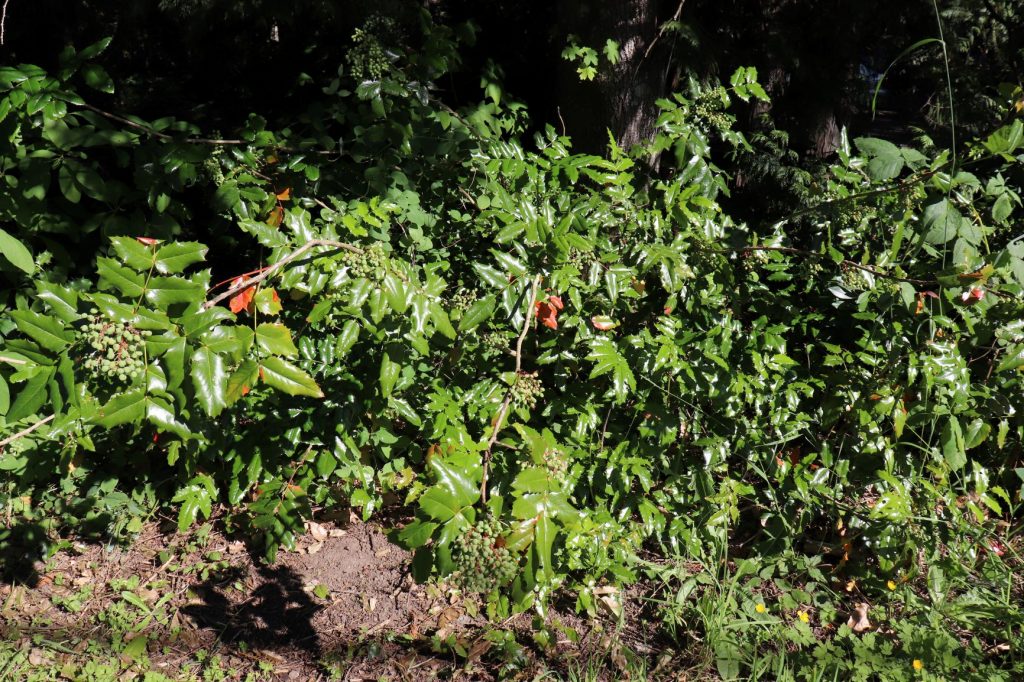

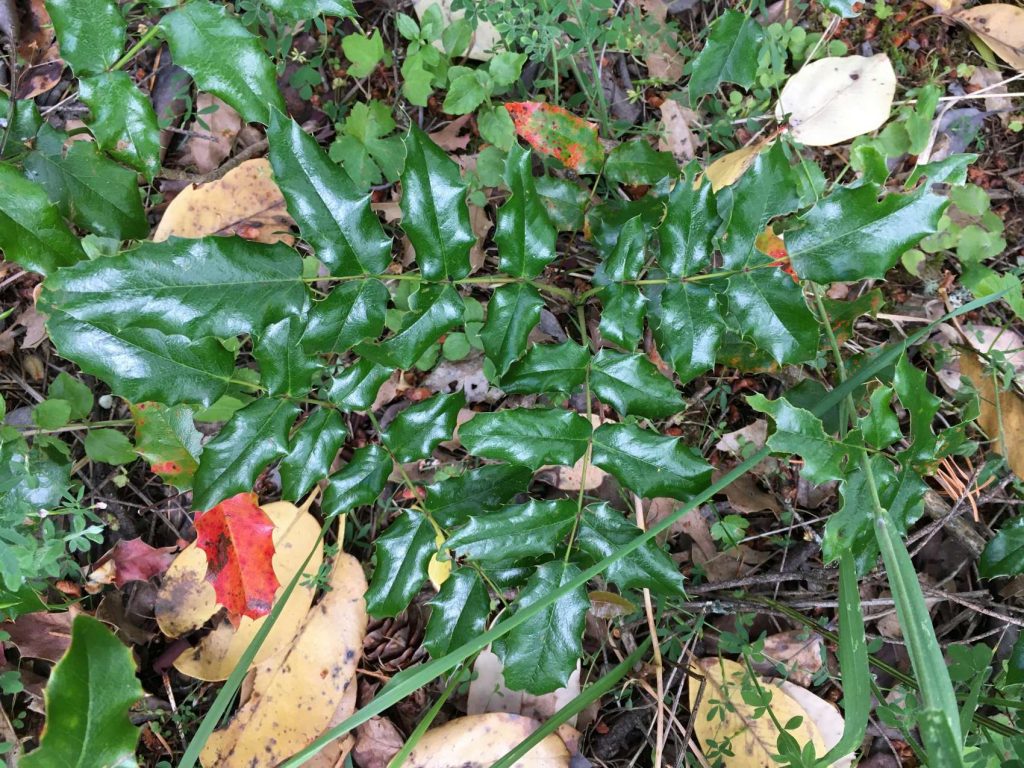



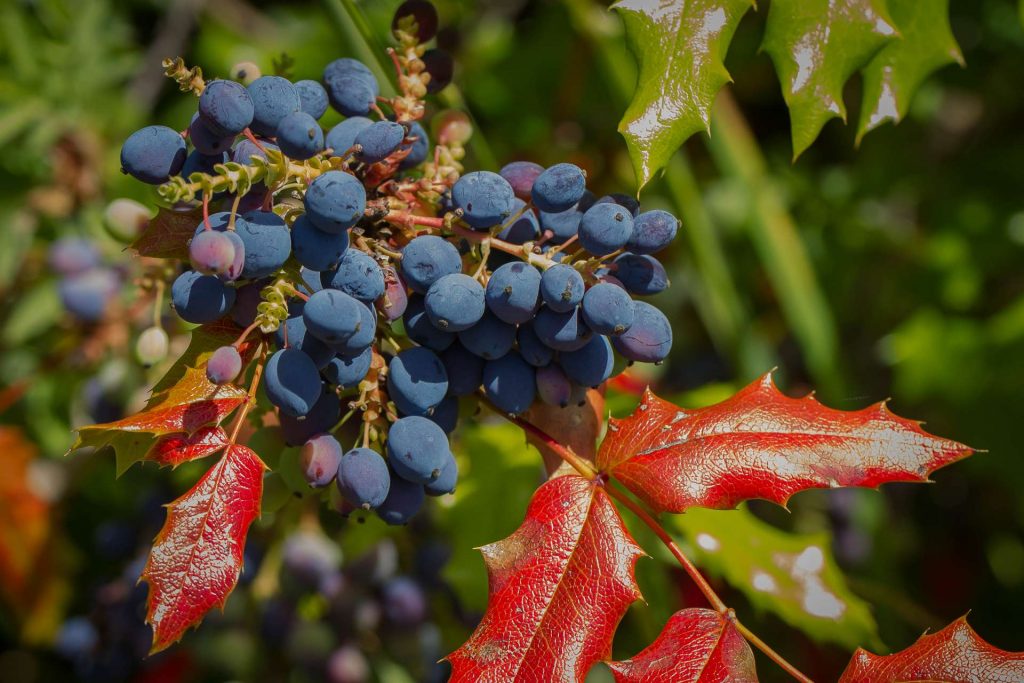
Here are some side by side comparisons between tall and dull Oregon grape. Tall on left, dull on right.

Tall: shinier leaves, fewer leaflets, shorter leaf. 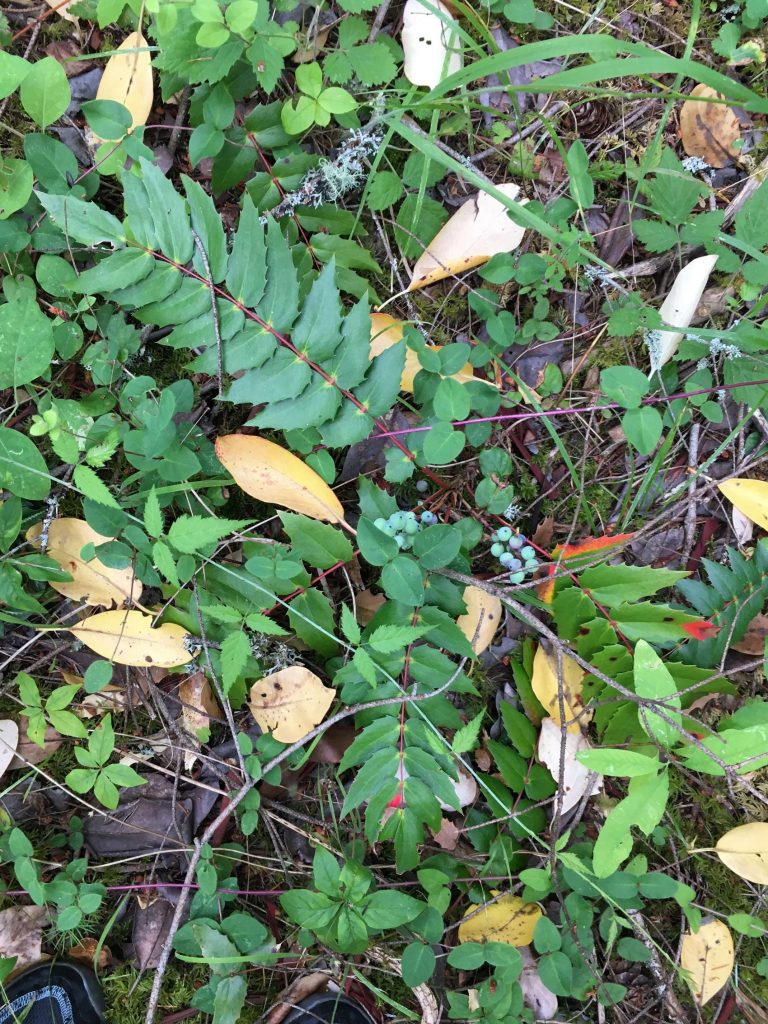
Dull: duller leaves, greater number of leaflets, longer leaf overall.

Tall: Single prominent central vein on underside of leaflet. 
Dull: several veins emanating from base of leaflet.

A stand of tall Oregon grape. 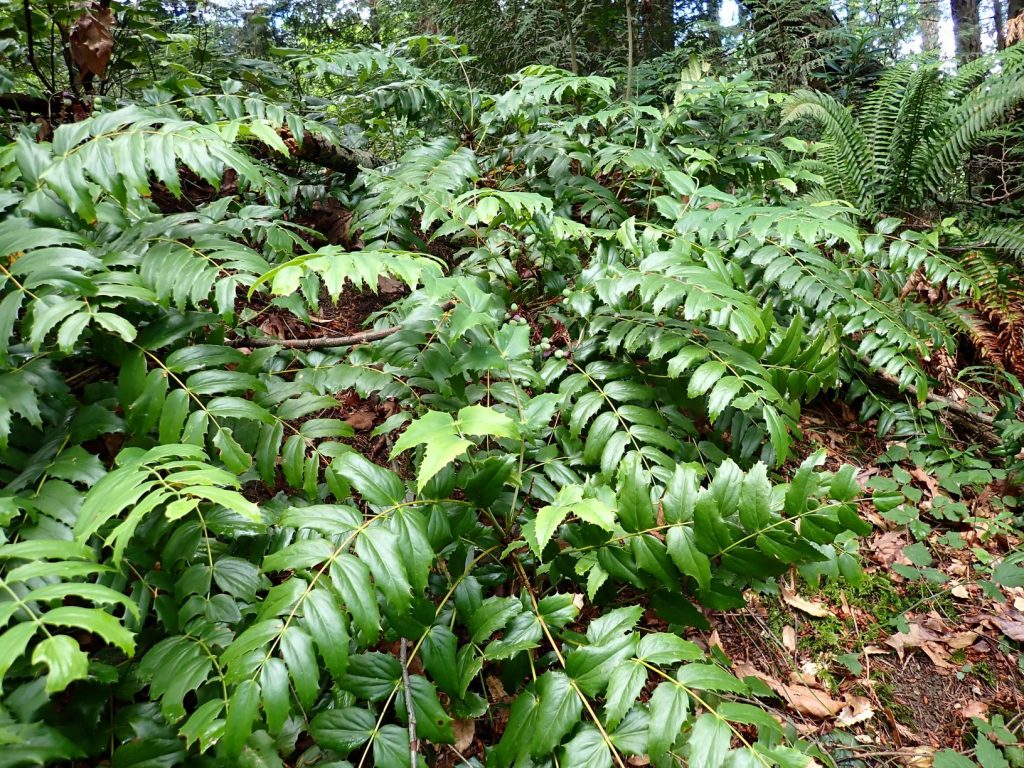
A stand of dull Oregon grape.